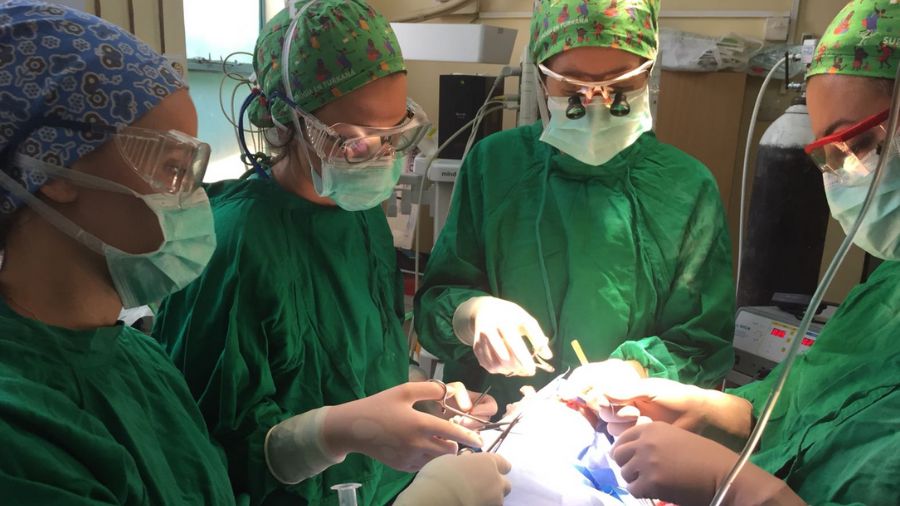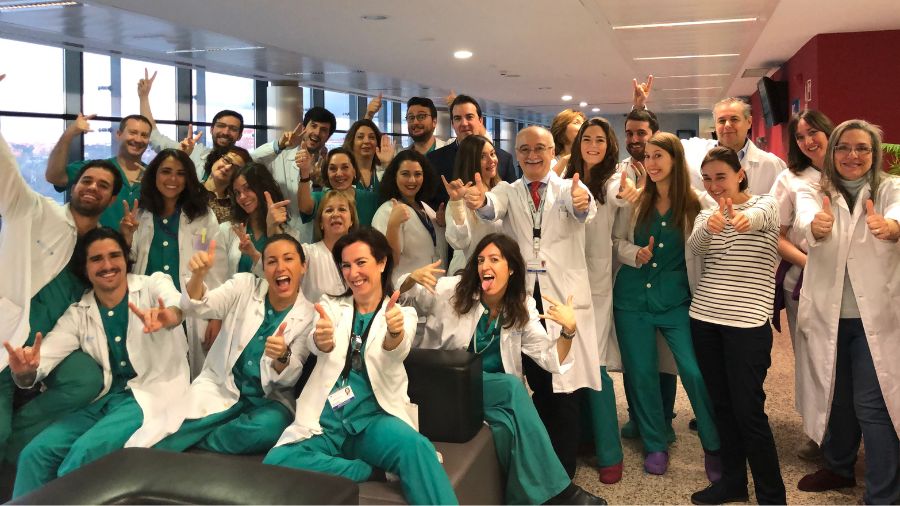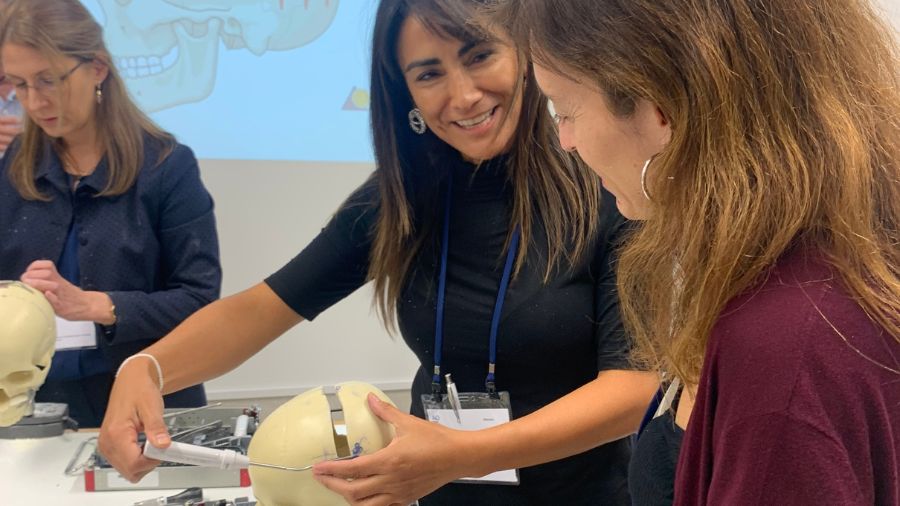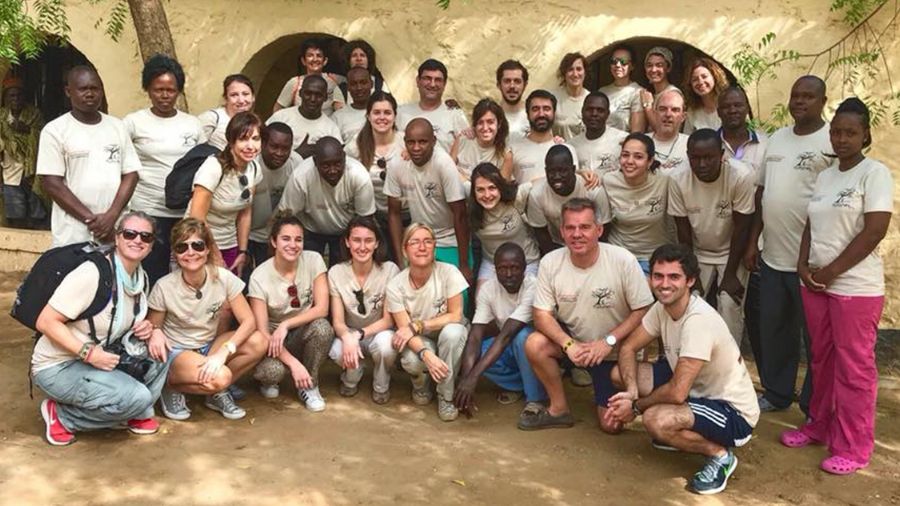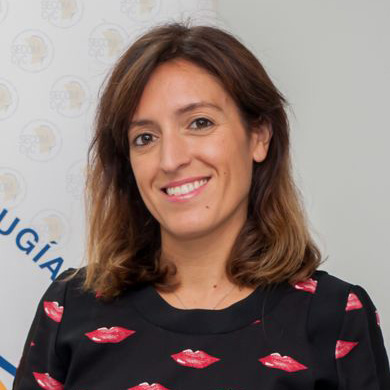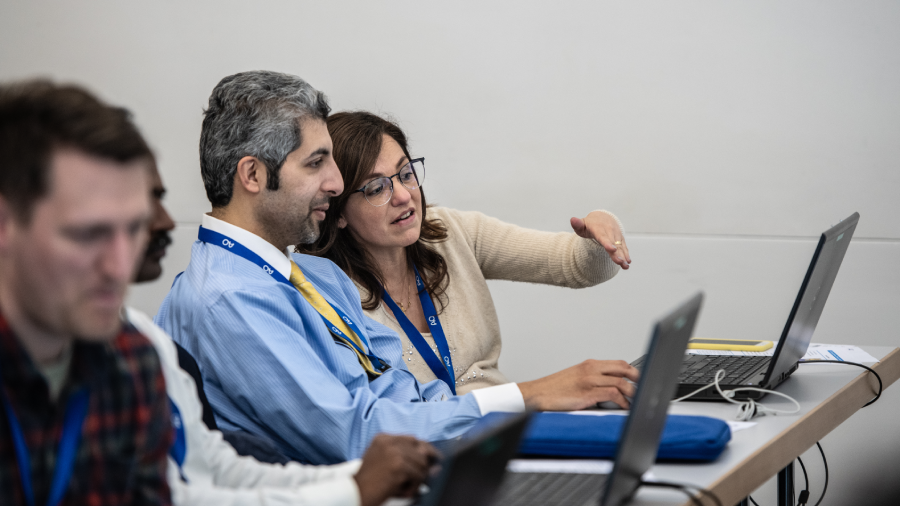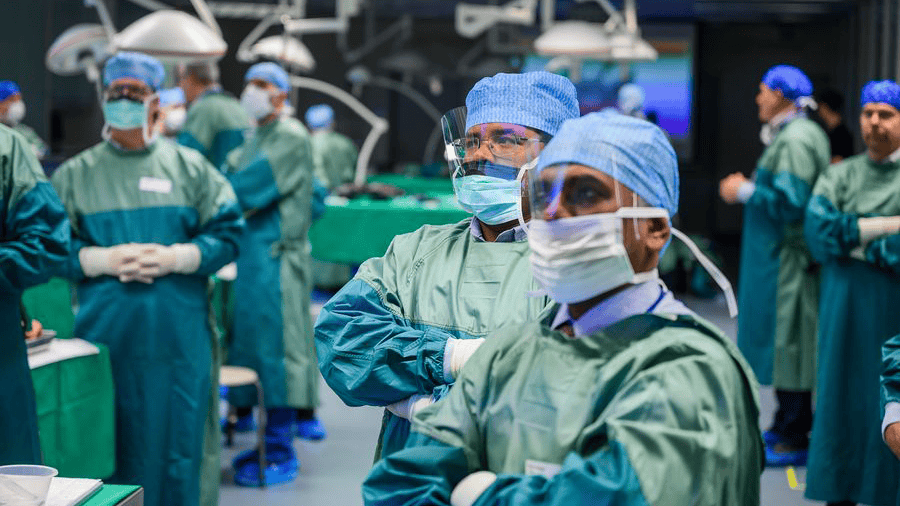Treating pediatric craniofacial deformities, from birth to adulthood
BY DR MARTA REDONDO
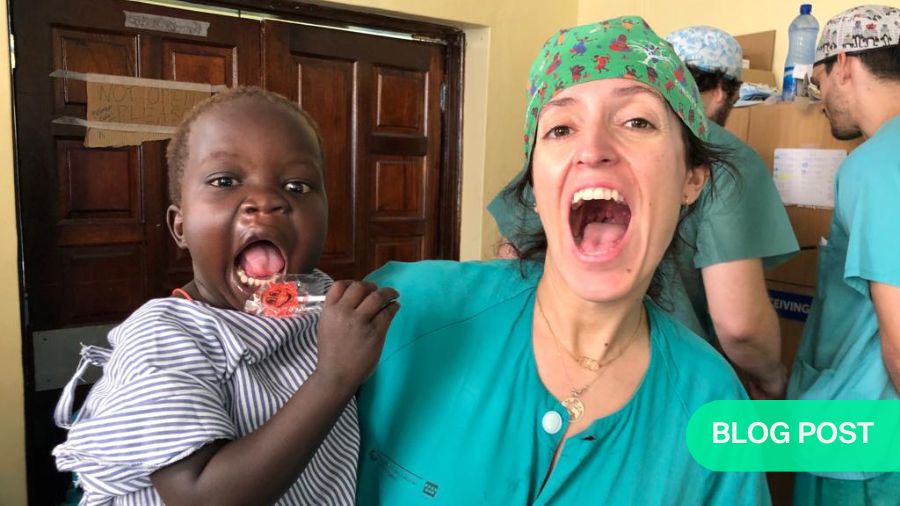
An oral and maxillofacial surgeon at a busy trauma hospital must be ready to treat any patient that comes through the door. In the oral and maxillofacial surgery (OMFS) specialty, this can range from traumatic injuries requiring reconstructive surgery, to children born with life-altering deformities of the skull or face, or patients battling with cancer. No two days are the same. A curious mind is essential to remaining at the top of the OMFS specialty. So too is building relationships with patients and their wider families—a relationship that can last well into adulthood.
The transition from child to adult is one of the most challenging aspects of treatment and requires cross-specialty clinical discussions and innovative digital tools and modeling. At Hospital Universitario 12 de Octubre in Madrid, the clinical practice covers on-call emergencies, multidisciplinary clinics, complex surgeries, and international learning forums. But the challenges and complexities can result in life-changing rewards.
Multidisciplinary approach in craniofacial deformity surgery
My working day at one of the largest public hospitals in Spain usually begins at 8am with an all-department maxillofacial meeting, where we discuss the events of the previous night, including any surgeries performed by the surgeons on-call. From there, we go to our respective departments, and I am mostly based in the pediatric hospital on the same campus.
Pediatrics is a fascinating and challenging area—these are very special patients, and they need to feel confident in their care and trust their doctors. You are not only treating the child, but often the whole family too. Once a week, on Wednesdays we work in the craniofacial operating room on patients who require input from neurosurgeons. Today, we have a five-year-old boy with Crouzon syndrome, a genetic condition which causes the seams of the skull to fuse abnormally. This little boy is also suffering from intracranial hypertension, obstructive sleep apnea, exorbitism, asymmetry of the orbits and malocclusion.
Complex cases such as these are presented by our resident at a multidisciplinary meeting of the craniofacial unit on Tuesdays. There, the treatment path is discussed by maxillofacial surgeons, pediatricians, neurosurgeons, radiologists, ophthalmologists, and ENT, and together we will agree the best course of action.
For this patient, the surgery is a monobloc distraction with a customized external device. Technological advancements have greatly improved the efficiency and accuracy of these kinds of procedures. Prior to operating, we will meet online with the engineer, where we undertake the virtual planning. This includes designing a customized device, along with cutting and positioning guides. These can be fixed to the patient and adapt to their exact anatomy, so we know we are not placing them near the shunt or the bone defects. In this way, we can ensure precision in the osteotomies and placement of the bone.
We perform the surgery together with a neurosurgeon, and after undertaking the distraction we use the device to move the bones of the face forward. This creates more space for the patient’s brain, eyes and airway, and the device will be removed again after three months.
‘Clinic of Continuity’ for children with craniofacial deformities
One of the biggest challenges of pediatric surgery is that the patient is still growing, so they often need multiple surgeries and specialist support. For example, for the child with Crouzon syndrome, one of the most important elements of care is to meet with the patient and his family before the surgery. This gives us an opportunity to explain the type of procedure, the approach we are taking, and discuss the possible outcomes and complications. Often, the families belong to a patients’ association specific to their syndrome, and it can help them to share their experiences with other families.
I am 39 years old, and I have been a maxillofacial surgeon at this hospital for more than 15 years, so I have syndromic patients I first treated as children, who are now adults. I am also dealing with adult patients that my colleagues treated since they were born with their syndrome. In these patients we have to deal with a lot of surgeries to treat their deformity and sequels as they grow. Again, technology makes this easier, as we can detect changes in the CT scans and use virtual planning to assist with the surgery and aftercare.
This is particularly important because you might do the surgery when a patient is eight years old and achieve perfect results, where they look like a ‘normal’ child. Then at 16 you find they have relapsed. We aim to do the final surgery at 16, 18 or 20, but sometimes with these patients you have to follow up again due to complications.
To support these patients, we have established what we call the Clinic of Continuity within the adult wing of the hospital. I attend this clinic every second Tuesday. When patients reach 16, they transition from the children’s hospital to the adult one, and this transition can be very difficult, so a colleague and I will see them both as pediatric patients and as adults over 16, to provide reassurance. We perform around three surgeries a month in the adult hospital as part of that dedication to continuity of care.
Another challenge for patients born with a certain pathology is that they will see a lot of different specialists as they grow up, and we have patients attending the hospital from all over Spain. We have created a dedicated craniofacial department email account to help patients to keep in touch with us. This way, they have one easy way to reach all of us with any questions and we can hold virtual consultations for patients who live further away.
Low prevalence pediatric anomalies—keep learning and forget your ego
As you will see, multidisciplinary working is very important in oral and maxillofacial surgery. Our hospital is busy and challenging in an area of Madrid that sees an especially large number of trauma patients. The hospital has an intensive care unit for trauma and a helipad for receiving emergency patients, so when you are on call you have to stay the full 24 hours in the hospital and treat patients from across the whole department. The most common cases are infections and trauma such as mandibular fractures, but you have to be ready to deal with whatever comes your way. That makes teamwork all the more important.
Clinics represent an important opportunity for collaboration and knowledge-share across disciplines, and we hold patient consultation clinics and planning sessions every Tuesday and Thursday, the non-surgery days. Early morning on a Tuesday we have a craniofacial meeting where we meet all the specialists of the unit, including pediatrics, ENT, neurosurgery, ophthalmology, and radiology, and discuss all the patients of the craniofacial unit. We also hold monthly multidisciplinary clinics, including clinics for patients with cleft lip and palate, and another specializing in vascular anomalies in children.
In the afternoons, I make time to attend web meetings. These might be TMJ prosthesis planning with engineers, or meetings with patient associations or the AO. Professional development is really important to me. I serve on the Board of the Spanish Society of OMF Surgeons, and I deliver classes here at the Hospital University on craniofacial abnormalities and co-operation maxillofacial surgery in developing countries. We are also an AO CMF Fellowship hospital, and I am part of a study on TMJ reconstruction with prosthesis, an AO CMF multicenter study. It’s interesting because there is not a high prevalence of these cases so sharing patient cases allows us to gather more data and to better understand the pathology and deliver more meaningful results.
My advice to young surgeons considering this specialty, is to always be learning.
In this era, the ego of the surgeon is high. We all want to be the best, but it’s so important—especially when treating low prevalence anomalies—to learn from colleagues and belong to multidisciplinary units. Over my career so far, I have also traveled a lot internationally, visiting hospitals in Chile, London, and Hong Kong. For the past six years I have worked at an NGO in Kenya, and I have also visited one of the AO CMF Centers in India, specialized in craniofacial anomalies. I think it’s important to visit other countries and see how they do things. If we work together, we can deliver better outcomes for our patients.
That feels especially important when I am treating children, who you often get to know over a number of years. For these patients, treatment goes beyond just surgical aesthetics and also includes psychological issues and social factors like bullying and how they integrate back into their world. Over the years you see children coming in with their mother, their siblings, and build trust with their family. I often start out to them as Dr Redondo, but I finish as Marta .
About the author:
Dr Marta Redondo is a member of the Craniofacial Unit of the 12 de Octubre University Hospital, which belongs to the European Reference Network Center specialized in Craniofacial Syndromes (ERN Cranio). She studied Medicine at Automona University of Madrid, taking part in a fifth year Erasmus programe in Parma, Italy. After graduating in 2008 Redondo held a residency in Oral and Maxillofacial surgery from 2009 to 2014 in 12 de Octubre University Hospital in Madrid. She also has a Masters in Aesthetic Medicine and a Global Online Fellowship in Head and Neck Oncology Surgery (IFHNOS).
Dr Redondo has traveled extensively for work, visiting Great Ormond Street Hospital for Children in London; the Institute of Craniofacial and Plastic Surgery (AO CMF Internacional Center) in Hyderabad, India; Necker hospital in Paris; Hospital Clínico de la Fuerza Aérea ans Clínica Santa María in Chile, and Queen Mary Hospital in Hong Kong. She has also participated in eight cooperation surgery campaigns in Kenya, Tanzania, and Ethiopia. Dr Redondo is a Fellow of the European Board of Oro-Maxillofacial Surgery, Head and Neck Surgery, a board member of the Spanish Society of Oral and Maxillofacial Surgeons, and AO CMF faculty since 2018.
You might also be interested in:
AO Fellowships
Discover unique opportunities to advance in your training and deepen your expertise.
AO CMF courses and events
Explore the upcoming courses, webinars, or online events in your region or worldwide.
AO CMF Global Study Club
An interactive platform where AO CMF members discuss cases, share experiences, and network.
Pediatric TMJ reconstructions
Emerging research shows superiority of costochondral graft in autologous experience.

